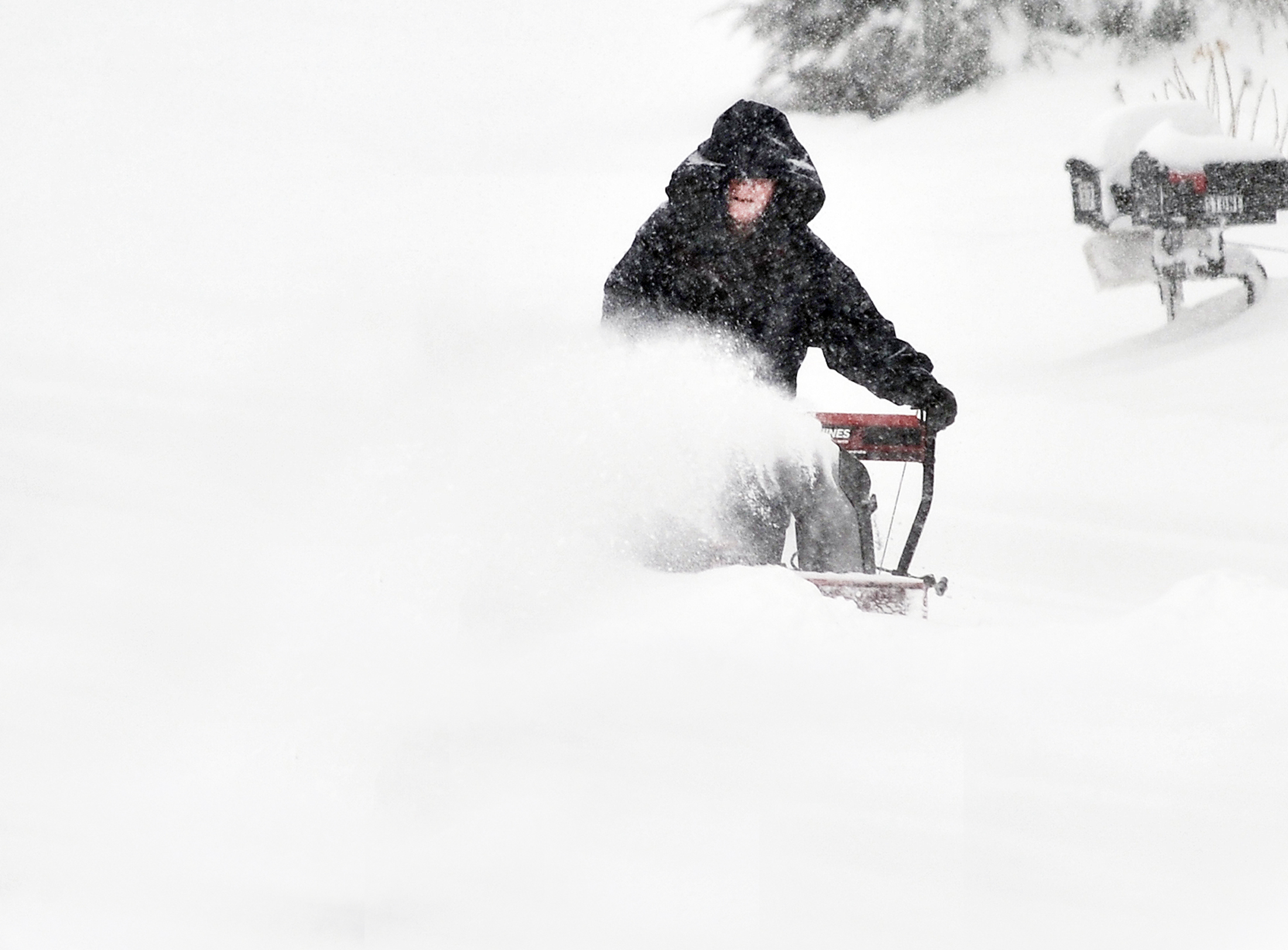SPRINGFIELD – Snow blowers have already gotten plenty of use this winter season, and with February traditionally being the worst month for snowfall, it’s likely more snow will batter New England.
According to the US Consumer Product Safety Commission, in 2013 some 28,000 people were treated in hospital emergency rooms for injuries that happened while shoveling or removing ice and snow manually. More than 6,000 people were injured using snow blowers.
“With each winter storm, we unfortunately see many devastating hand and finger injuries from snow blower accidents,” Dr. Pranay Parikh of Baystate Hand & Wrist Surgery.
According to the Baystate Medical Center plastic surgeon, 10 percent of those injuries involve amputation of the hand or fingers, and occur when users attempt to clear a clogged auger or exit chute. Other injuries can include broken bones, bruises, sprains, as well as severe cuts.
“One of the most common misconceptions is that the spinning blade or auger located at the intake end of the snow blower poses the greatest hazard. While this is true, most snow blower injuries occur at the exit chute, where the impeller spins rapidly to propel snow away from the area being cleared. When the exit chute is clogged, there is torque and energy loaded in the impeller blades, just like a wound-up spring. When the chute is cleared, the impeller blades will spin, releasing that energy, and forcefully striking anything near their path,” said Dr. Parikh.
“Even with the snow blower turned off, there is still a risk of major injury. The most common injuries we see are finger amputations, or severe fractures of the end of the finger, which often result in pain, deformity, and loss of hand function. Recovery may
take months and some patients are left with permanent impairments despite the best possible medical care,” he added. The Baystate Medical Center hand surgeon noted that while the middle finger, because it is the longest, is involved most frequently in injury, multiple fingers are usually affected.
Among the most common weather conditions associated with snow blower injuries are heavy, wet snow averaging greater than six inches deep with temperatures of 28 degrees Fahrenheit or greater.
Dr. Parikh also noted that “injuries from snow blower accidents are devastating in terms of suffering, recovering time, and medical costs.”
To prevent serious hand injuries when using your snow blower, the American Society for Surgery of the Hand and Dr. Parikh recommend the following safety tips if your snow blower jams:
· Turn the snow blower off.
· Disengage the clutch.
· Wait five seconds after shutting off to allow impeller blades to stop rotating.
· Always use the snow blower’s attached clearing tool, or a broom handle to clear impacted snow, which must be strong enough to avoid breakage or eye injuries can result from flying fragments.
· Never put your hand near chute or around blades.
· Keep all shields in place and do not remove safety devices on machine.
· Keep hands and feet away from moving parts.
“Getting behind a snow blower to operate it is almost like getting behind the wheel of a car…both can cause serious injury when you are
not paying attention. Don’t drink alcohol, which can impair your judgment, before going outdoors and using a snow blower,” said Dr. Parikh.
He also cautioned about leaving a snow blower running unattended, especially if children are nearby, and to not let younger people operate the machine.
For more information on Baystate Medical Center, visit www.baystatehealth.orb/bmc.


